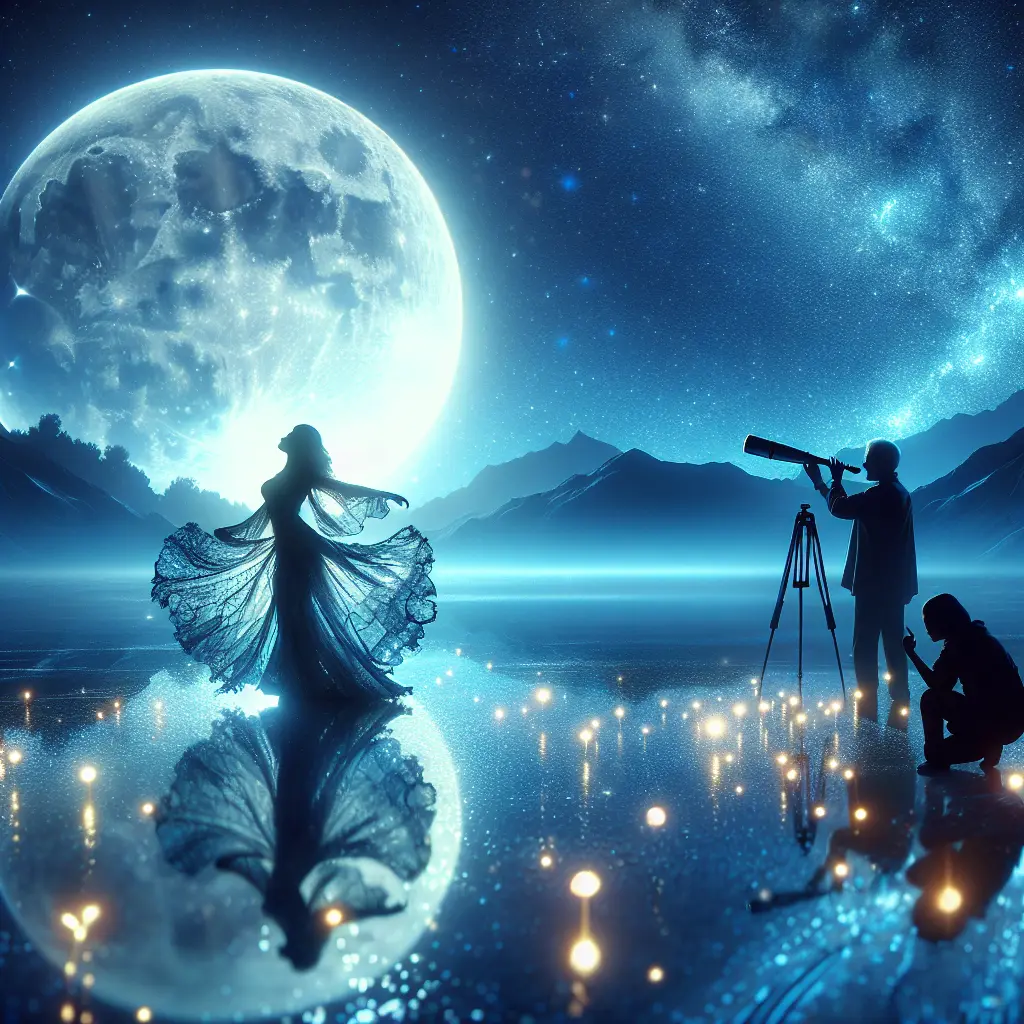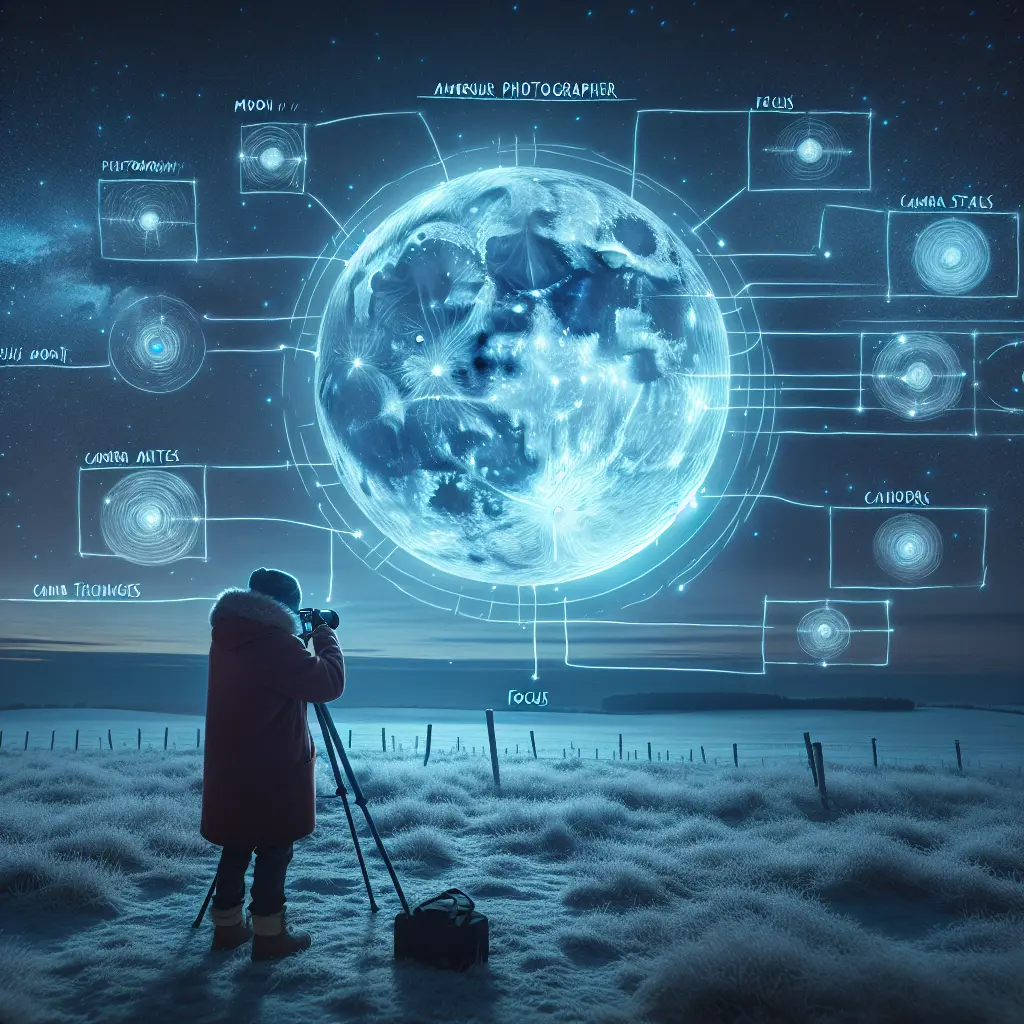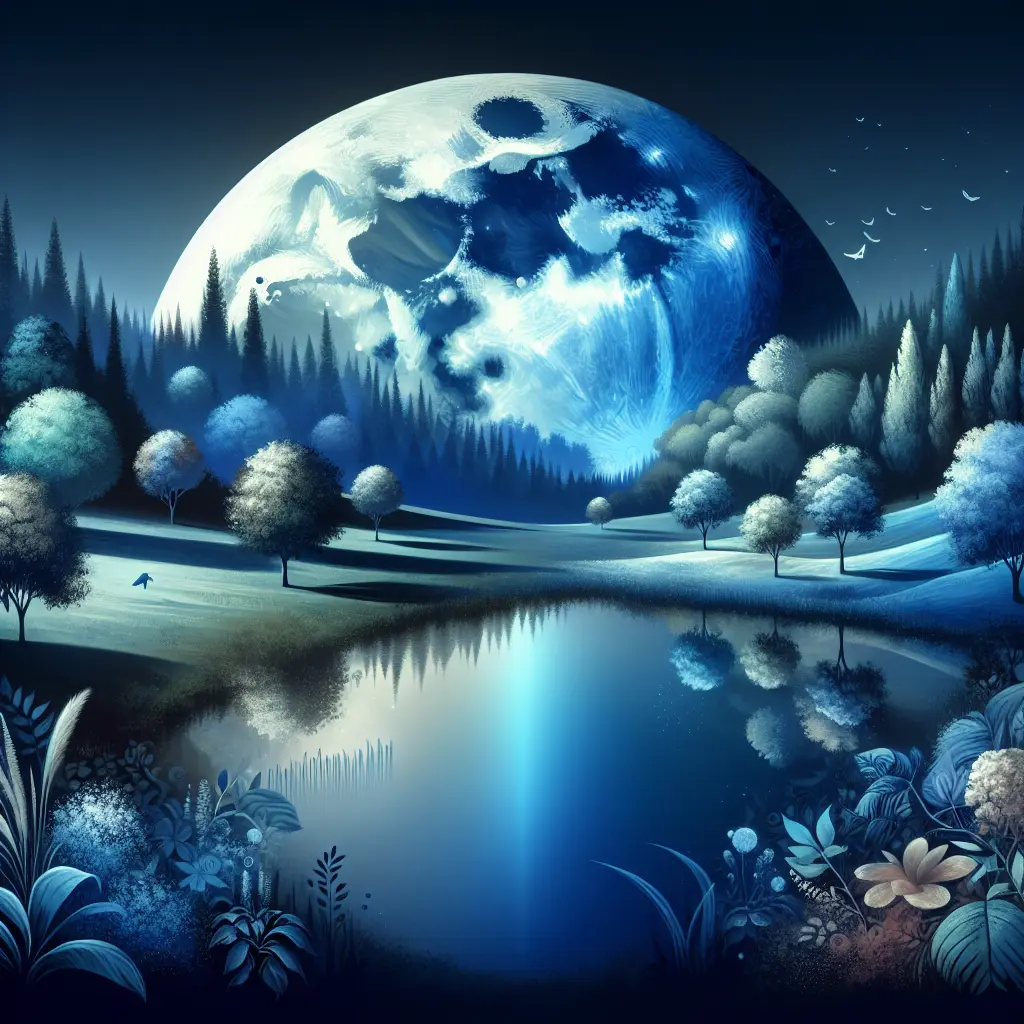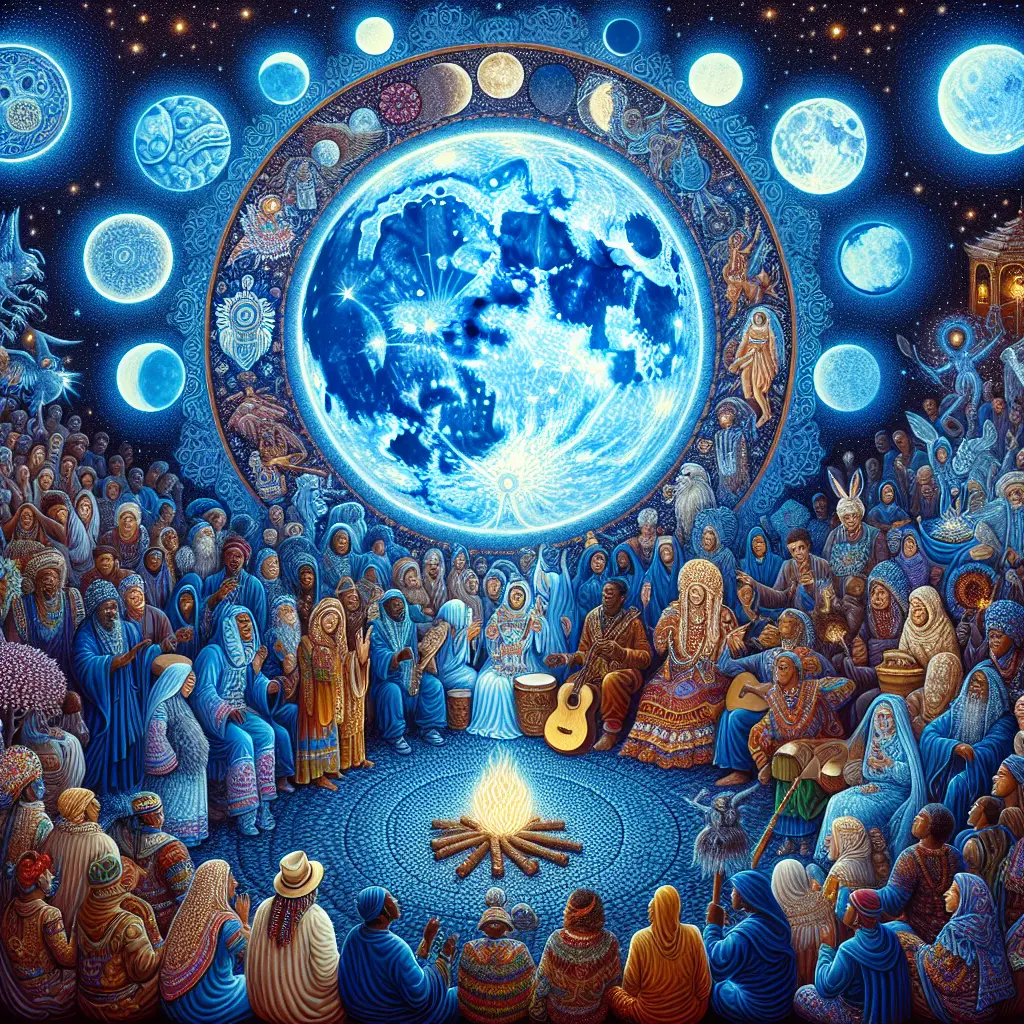Capturing the mystical allure of a Blue Moon is a pursuit that entices both novice shutterbugs and seasoned photographers. As this rare lunar event paints the night sky with its silvery glow, it offers a unique opportunity to hone your night sky photography skills. Whether you're eager to master Blue Moon photography techniques or seeking practical Blue Moon photography tips, this guide is your gateway to transforming a simple snapshot into a work of art.
From understanding optimal Blue Moon camera settings to discovering the best lenses for moon photography, every aspect of photographing the Blue Moon demands a blend of technical precision and artistic flair.
The enchanting dance of light and shadow offers endless Blue Moon composition ideas, challenging photographers to explore long exposure for moon photography and experiment with creative Blue Moon shots.
For beginners in moon photography, navigating the complexities of Blue Moon photography equipment and post-shoot photo editing tips can seem daunting. Yet, with the right guidance, even the most intricate Blue Moon photography challenges can be surmounted.
As you embark on this astrophotography journey, exploring the nuances of photographing lunar events with your DSLR becomes not just a hobby but an artistic exploration.
Blue Moon Photography Tips and Techniques
Dive into this comprehensive Blue Moon photo guide and unleash your creativity under the celestial spotlight. Discover the secrets of artistic moon photography and embrace the thrill of photographing the Blue Moon. Up next, we delve deeper into essential techniques and insider tips that will elevate your lunar captures to new heights.
The allure of capturing the Blue Moon lies not just in its rarity but also in the challenge it presents to photographers. Unlike regular full moons, a Blue Moon occurs only once in a blue moon, making it an exciting event for night sky photography enthusiasts. To truly capture the essence of the Blue Moon, understanding its nuances is crucial. Recent research from NASA highlights that the term "Blue Moon" can refer to either the second full moon in a calendar month or the third full moon in a season with four full moons. This distinction can influence your preparation and anticipation for photographing the Blue Moon.
Mastering Blue Moon camera settings is pivotal for achieving stunning results. When photographing the Blue Moon, setting your camera to manual mode offers the greatest control. A good starting point is to use a low ISO (such as 100 or 200) to minimize noise, combined with an aperture of f/8 to f/11 to ensure sharpness across the frame. For shutter speed, aim for around 1/125 to 1/250 seconds to capture clear details of the lunar surface without overexposure. Experimenting with these settings will allow you to find the perfect balance for your specific shooting conditions.
Selecting the best lenses for moon photography can significantly enhance your results. Telephoto lenses, ranging from 200mm to 600mm, are ideal for getting a close-up view of the moon's surface. These lenses magnify the moon, allowing you to capture intricate details like craters and maria. If you're looking to incorporate landscape elements into your composition, a wide-angle lens can be effective for artistic moon photography, creating compelling juxtaposition between the vast sky and earthly features.
Overcoming Blue Moon Photography Challenges
Photographers often face Blue Moon composition challenges, but these can be transformed into opportunities for creativity. Consider integrating foreground elements such as silhouettes of trees or buildings to add context and scale to your lunar captures. Long exposure for moon photography can produce striking star trails, adding dynamic motion to your shots. Additionally, experimenting with reflections in water bodies can lead to mesmerizing creative Blue Moon shots.
Shooting Blue Moon with DSLR cameras presents its own set of challenges, especially for beginners in moon photography. The key is to practice patience and persistence. Ensuring your equipment is stable is essential; using a sturdy tripod and a remote shutter release or timer can help eliminate camera shake during long exposures. Moreover, checking weather forecasts and planning your shoot around clear skies will increase your chances of success when capturing Blue Moon events.
Investing in quality Blue Moon photography equipment is essential for capturing high-quality images. In addition to a DSLR or mirrorless camera and suitable lenses, consider accessories like a polarizing filter to reduce glare and enhance contrast. A portable star tracker can also be beneficial for extended exposures, keeping the moon sharp while allowing other celestial bodies to streak across the frame.
Once you have captured your images, post-shoot photo editing tips can elevate them further. Software like Adobe Lightroom and Photoshop offers powerful tools for enhancing lunar photos. Adjusting contrast and brightness can bring out details on the moon's surface, while sharpening tools can enhance clarity. Pay attention to color balance as well; sometimes a subtle blue tint can emphasize the mystical aura of a Blue Moon.
Engaging with astrophotography communities can provide support and inspiration. Online forums and social media groups dedicated to night sky photography offer platforms for sharing your work and receiving feedback from fellow enthusiasts. Additionally, attending workshops or joining local photography clubs can help you refine your techniques and stay informed about upcoming celestial events.
For those ready to take their skills further, advanced techniques such as HDR (High Dynamic Range) imaging can enhance detail in both the highlights and shadows of your Blue Moon photos. Focus stacking is another technique that combines multiple exposures at different focus distances, resulting in an image with enhanced depth of field.
By embracing these Blue Moon photography tips and techniques, you position yourself to capture this celestial wonder in all its splendor. Whether you're a novice or a seasoned photographer, each shot taken during a Blue Moon is a testament to both your technical prowess and artistic vision in lunar photography.
We invite you to share your Blue Moon photography experiences and tips. Your journey under the night sky is as unique as each shot you capture. Keep exploring, and may your lunar photography endeavors be filled with both wonder and achievement. Clear skies and happy shooting!






Leave a Comment